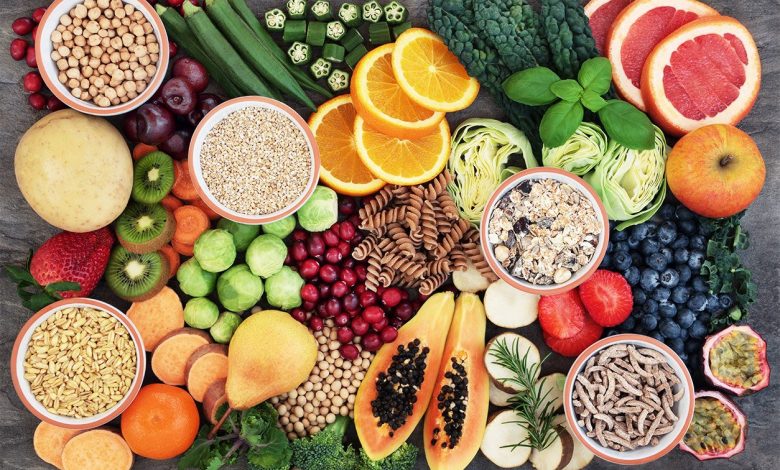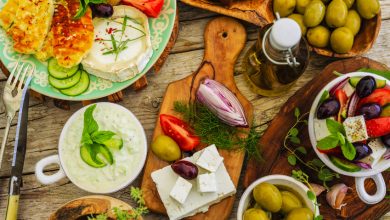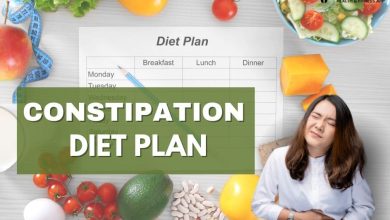Dietitians Share the High-Fiber Foods They Can’t Live Without

When it comes to nutrition, fibre is often overlooked compared to protein, fat, or even carbohydrates. Yet, dietitians agree that fibre is one of the most essential nutrients for health and longevity. From supporting digestion and balancing blood sugar to reducing cholesterol and aiding weight management, high-fibre foods are a cornerstone of a healthy diet.
But with so many choices available, which fibre-rich foods truly stand out as staples in a dietitian’s kitchen? We spoke with registered dietitians and nutrition experts to uncover the high-fibre foods they personally can’t live without—and why these everyday choices are worth adding to your plate.
Why Fibre Matters More Than You Think
Before diving into their favourite foods, it’s important to understand why fibre is so vital. Unlike other nutrients, fibre is a type of carbohydrate that your body can’t fully digest. Instead, it passes through your digestive system, providing a range of health benefits.
There are two main types of fibre:
- Soluble fibre: dissolves in water to form a gel-like substance. It slows digestion, lowers cholesterol, and stabilises blood sugar.
- Insoluble fibre: adds bulk to stool, promotes regular bowel movements, and prevents constipation.
Most plant foods contain a mix of both, but the balance varies.
According to the British Nutrition Foundation and US Dietary Guidelines, adults should aim for 25–38 grams of fibre per day. Unfortunately, surveys show that most people consume far less—often around 15–18 grams daily.
15 High-Fiber Foods
That’s where simple swaps and mindful food choices come in. Let’s explore the high-fibre staples dietitians say make all the difference.
1. Oats: A Breakfast Classic That Never Gets Old
“Oats are my go-to because they’re versatile, affordable, and packed with soluble fibre that’s great for heart health.” — Sarah, RD
Oats are a beloved dietitian favourite for a reason. Just one cup of cooked oats delivers around 4 grams of fibre, much of it in the form of beta-glucan—a soluble fibre linked to lower cholesterol and improved satiety.
Why Dietitians Love Them:
- Help lower LDL (“bad”) cholesterol
- Keep you feeling full longer
- Easy to customise with fruit, nuts, or seeds
Ideas to Try:
- Overnight oats with chia seeds and berries
- Warm oatmeal topped with banana and cinnamon
- Savoury oat bowls with spinach, avocado, and egg
2. Lentils: The Unsung Hero of Plant Protein
“I always recommend lentils. They’re budget-friendly, rich in fibre, and provide plant-based protein. It’s a win-win.” — Aisha, MSc Nutrition
Lentils are a nutrition powerhouse. A single cup of cooked lentils packs about 15–16 grams of fibre, making them one of the richest sources available.
Why Dietitians Love Them:
- High in both soluble and insoluble fibre
- Excellent source of plant-based protein
- Support gut health and stable energy levels
Ideas to Try:
- Lentil soup with carrots and celery
- Lentil curry with brown rice
- A cold lentil salad with cucumbers, tomatoes, and olive oil
3. Apples: A Snack That Works for Everyone
“Apples are such a simple, everyday choice, but they’re loaded with soluble fibre in the skin.” — Rachel, RD
An apple a day may not keep the doctor entirely away, but it certainly contributes to a healthy diet. A medium apple provides 4 grams of fibre, mostly pectin, which supports gut bacteria and helps regulate blood sugar.
Why Dietitians Love Them:
- Portable and easy to eat on the go
- Naturally sweet without added sugar
- Rich in antioxidants as well as fibre
Ideas to Try:
- Sliced apple with almond butter
- Baked apple with cinnamon and oats
- Chopped apple in a green salad
4. Chia Seeds: Tiny Seeds with Big Benefits
“Chia seeds are a staple in my pantry. They’re an effortless way to boost fibre in meals.” — Emma, RD
These tiny black-and-white seeds are fibre champions. Just two tablespoons contain about 10 grams of fibre, much of it soluble. They also expand in liquid, creating a gel that promotes satiety and smooth digestion.
Why Dietitians Love Them:
- Extremely high in fibre density
- Provide omega-3 fatty acids and protein
- Can be added to both sweet and savoury dishes
Ideas to Try:
- Chia pudding with almond milk and mango
- Sprinkled over Greek yoghurt
- Stirred into soups or smoothies
5. Berries: Sweet, Colourful, and Fibre-Rich
“Berries are my favourite fruit for fibre. Plus, they add colour and antioxidants to any meal.” — Laura, RD
Raspberries and blackberries stand out with around 8 grams of fibre per cup. Strawberries and blueberries also contribute, though in slightly smaller amounts.
Why Dietitians Love Them:
- Rich in both soluble and insoluble fibre
- High in vitamin C and antioxidants
- Naturally low in sugar compared to other fruits
Ideas to Try:
- Fresh berry parfait with yoghurt
- Smoothie with mixed berries and spinach
- Frozen berries added to porridge or baked goods
6. Chickpeas: A Fibre-Rich Protein Boost
“I always keep canned chickpeas in my kitchen. They’re so versatile—from hummus to roasted snacks.” — Hannah, RD
One cup of cooked chickpeas offers 12 grams of fibre alongside plant protein, making them a staple in Mediterranean and Middle Eastern diets.
Why Dietitians Love Them:
- Excellent source of soluble fibre
- Help stabilise blood sugar
- Can be used in sweet and savoury dishes
Ideas to Try:
- Hummus with raw veggies
- Roasted chickpeas with spices
- Chickpea curry with whole grains
7. Broccoli: The Fibre-Rich Green Everyone Needs
“Broccoli is my favourite vegetable. It’s full of fibre and phytochemicals that support long-term health.” — Dr. Lisa, RD, PhD
A cup of cooked broccoli provides 5 grams of fibre, plus sulforaphane, a plant compound studied for its potential cancer-fighting effects.
Why Dietitians Love Them:
- Provides both soluble and insoluble fibre
- Rich in vitamins C and K
- Helps support gut microbiome diversity
Ideas to Try:
- Steamed broccoli with lemon
- Stir-fry with garlic and soy sauce
- Roasted broccoli with olive oil and almonds
8. Avocados: Creamy and Fibre-Packed
“People are surprised when I tell them avocados are high in fibre as well as healthy fats.” — Nina, RD
Half an avocado contains around 7 grams of fibre, plus heart-healthy monounsaturated fats that help absorption of fat-soluble vitamins.
Why Dietitians Love Them:
- Blend of soluble and insoluble fibre
- Support satiety and blood sugar balance
- Creamy texture makes them easy to enjoy
Ideas to Try:
- Mashed on wholegrain toast
- Added to smoothies for creaminess
- Sliced in salads or grain bowls
9. Quinoa: A Fibre-Friendly Grain Alternative
“Quinoa is one of my favourites because it’s a whole grain that’s also high in protein.” — Meera, RD
Quinoa offers about 5 grams of fibre per cup cooked, along with complete plant protein.
Why Dietitians Love Them:
- Gluten-free and versatile
- Provides both fibre and essential amino acids
- Works well in both sweet and savoury recipes
Ideas to Try:
- Quinoa salad with vegetables and feta
- Breakfast quinoa with milk, nuts, and fruit
- As a base for stir-fries or curries
10. Flaxseeds: A Fibre and Omega-3 Powerhouse
“I add ground flaxseed to almost everything—porridge, yoghurt, smoothies. It’s such an easy fibre boost.” — Olivia, RD
Two tablespoons of ground flaxseed provide about 4 grams of fibre plus alpha-linolenic acid (ALA), a plant-based omega-3.
Why Dietitians Love Them:
- Contain soluble and insoluble fibre
- Support heart health
- Can be used as an egg substitute in baking
Ideas to Try:
- Added to muffins or bread recipes
- Stirred into porridge or smoothies
- Sprinkled over salads
11. Sweet Potatoes: A Comfort Food with Fibre
“Sweet potatoes are my personal favourite because they’re delicious and loaded with fibre and vitamin A.” — Sophie, RD
One medium sweet potato with skin contains about 4 grams of fibre, plus antioxidants like beta-carotene.
Why Dietitians Love Them:
- Provide both fibre and complex carbs
- Naturally sweet, making them kid-friendly
- Support gut health and immune function
Ideas to Try:
- Roasted sweet potato wedges
- Mashed sweet potatoes with garlic
- Baked sweet potato topped with black beans
12. Wholegrain Bread: Simple but Powerful
“I tell clients to choose wholegrain bread instead of white. It’s such an easy switch that boosts fibre intake.” — Anna, RD
One slice of wholegrain bread provides 2–3 grams of fibre, which adds up quickly throughout the day.
Why Dietitians Love Them:
- Readily available and affordable
- Great base for balanced meals
- Helps prevent blood sugar spikes
Ideas to Try:
- Wholegrain toast with nut butter
- Sandwich with lean protein and vegetables
- Avocado toast topped with seeds
13. Nuts: Crunchy Fibre in Every Bite
“Almonds are my go-to snack. They’re rich in fibre and healthy fats, which help keep me full.” — James, RD
Nuts like almonds, pistachios, and walnuts contain 3–4 grams of fibre per ounce, along with healthy fats and protein.
Why Dietitians Love Them:
- Convenient snack option
- Blend of fibre, fat, and protein
- Linked to better heart health
Ideas to Try:
- Trail mix with nuts and dried fruit
- Nut butter spread on wholegrain toast
- Crushed nuts sprinkled over yoghurt
14. Pears: Juicy, Sweet, and Fibre-Rich
“Pears are underrated. With the skin on, they’re one of the best fibre-rich fruits.” — Caroline, RD
A medium pear provides about 6 grams of fibre, much of it soluble.
Why Dietitians Love Them:
- Hydrating and naturally sweet
- Great for digestion and satiety
- Pair well with sweet and savoury dishes
Ideas to Try:
- Fresh pear slices with cheese
- Poached pears with cinnamon
- Pear salad with walnuts and rocket
15. Brown Rice: A Staple with Staying Power
“Brown rice is one of my favourite grains. It’s versatile and adds fibre where white rice doesn’t.” — Tom, RD
One cup of cooked brown rice contains about 3.5 grams of fibre, more than double that of white rice.
Why Dietitians Love Them:
- Wholegrain option that supports digestive health
- Provides steady energy release
- Affordable and widely available
Ideas to Try:
- Brown rice stir-fry with vegetables
- Grain bowls with chickpeas and avocado
- Rice salads with herbs and lemon dressing
Putting It All Together: Building a High-Fibre Plate
Eating more fibre doesn’t mean overhauling your diet overnight. Instead, dietitians recommend gradual changes, since suddenly increasing fibre can cause bloating or digestive discomfort.
Here are some simple ways to boost fibre intake:
- Start the day with fibre: oats, chia seeds, or wholegrain toast
- Swap refined carbs for whole grains: choose brown rice, quinoa, or wholemeal pasta
- Add legumes to meals: lentils, beans, and chickpeas can replace or complement meat
- Snack smartly: fruits, nuts, and seeds beat processed snacks
- Keep the skin on: when eating apples, pears, or potatoes, the skin adds extra fibre
Final Thoughts
Fibre may not get the same attention as protein or superfoods, but dietitians know it’s a quiet powerhouse that supports nearly every aspect of health. From oats and lentils to berries and broccoli, these high-fibre staples are easy to incorporate into everyday meals.
If you’re looking to improve digestion, balance blood sugar, or simply feel fuller for longer, these dietitian-approved foods are worth keeping in your kitchen. Start small, experiment with recipes, and over time, you’ll find that a fibre-rich diet isn’t just healthy—it’s delicious and satisfying too.




